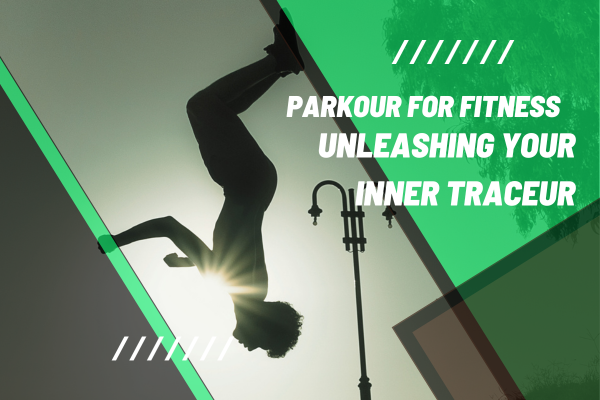Parkour for Fitness: Unleashing Your Inner Traceur

Parkour, often described as the art of movement, is a dynamic and exhilarating discipline that focuses on overcoming physical obstacles with speed, efficiency, and creativity.
While parkour's roots lie in the world of acrobatics and urban exploration, it has also gained recognition as a powerful fitness and training method.
In this article, we'll explore the world of parkour for fitness, its benefits, and how it can help you achieve remarkable physical prowess.
What is Parkour?
Parkour is an athletic discipline that originated in France and was popularized by David Belle and his group of practitioners known as "traceurs."
It involves moving fluidly through your environment, using your body to navigate obstacles such as walls, railings, and gaps, often in urban settings.
Parkour for Fitness: A Unique Workout
Parkour fitness offers a range of physical and mental benefits that make it an appealing fitness choice:
1. Full-Body Workout
Parkour engages nearly every muscle group in your body, from your legs and core to your upper body. Climbing, jumping, and vaulting require strength, flexibility, and coordination.
2. Cardiovascular Endurance
The high-intensity nature of parkour provides an excellent cardiovascular workout, improving your stamina and endurance.
3. Functional Strength
Parkour builds functional strength, which means it enhances your ability to perform real-world movements and tasks.
4. Mental Agility
Parkour encourages quick thinking, problem-solving, and adaptability as you navigate complex environments and make split-second decisions.
5. Flexibility and Mobility
The varied movements in parkour improve your flexibility and joint mobility, reducing the risk of injury.
Parkour for Fitness: Getting Started
If you're interested in incorporating parkour into your fitness routine, here are some steps to get you started:
1. Find a Qualified Instructor
Parkour is best learned from experienced instructors who can teach you proper techniques and ensure your safety.
2. Start with the Basics
Begin with fundamental movements like landing, rolling, and precision jumps. Mastering these basics is crucial for safe progression.
3. Safety First
Always prioritize safety when practicing parkour. Wear appropriate gear, such as comfortable athletic clothing and sneakers with good grip.
4. Gradual Progression
Progress at your own pace. Don't rush into advanced movements before you've mastered the basics.
5. Regular Practice
Consistency is key to improving your parkour skills. Dedicate time to regular practice sessions.
Parkour Philosophy
Beyond its physical and mental benefits, parkour has a unique philosophy that emphasizes freedom, self-expression, and adaptability.
Practitioners often seek to overcome personal limitations and explore their physical potential.
This philosophy extends to everyday life, encouraging individuals to approach obstacles with creativity and resilience.
Conclusion
Parkour for fitness is more than just a workout; it's an art form that fosters physical prowess, mental agility, and a unique perspective on movement.
As you explore the world of parkour, you'll discover not only the thrill of overcoming physical challenges but also the joy of self-expression and personal growth.
Whether you're a seasoned athlete or a fitness enthusiast looking for a new and exciting way to stay active, parkour offers an invigorating and holistic fitness experience that can unleash your inner traceur.
FAQs (Frequently Asked Questions)
1. Is parkour only for young and athletic individuals?
Parkour is accessible to individuals of various ages and fitness levels. It can be adapted to suit your abilities, and progress can be made at your own pace.
However, if you have any underlying medical conditions, it's advisable to consult with a healthcare provider before starting parkour.
2. Is parkour dangerous?
Like any physical activity, parkour carries a degree of risk.
However, when practiced safely under the guidance of qualified instructors, the risk can be minimized.
Learning proper techniques and gradually progressing in difficulty levels are essential for safety.
3. Can I practice parkour indoors?
While parkour is often associated with urban environments, it can also be practiced indoors in gyms or specialized facilities.
Indoor training can provide a controlled and safe environment for learning and honing parkour skills.
